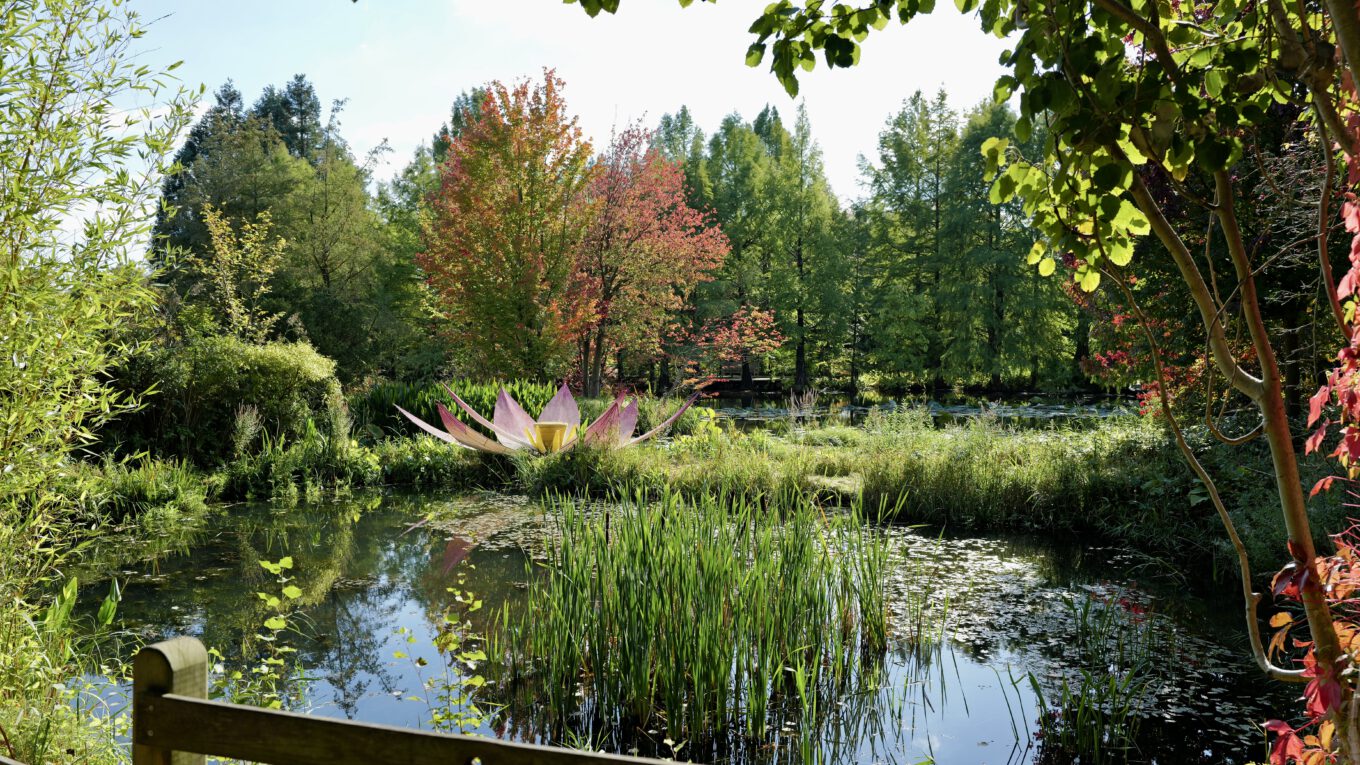Die weise Natur, die Teppiche und ich
Es gibt Tage, da umarmt einen die Natur. Man spürt sie förmlich: klug, gelassen, weise. Sie legt einem Gefühle in die Brust, schenkt Beziehungen, stiftet Verstand – und dieser Verstand erfindet dann manchmal Teppiche.
Von Krempe nach Ellerhoop also. Dort, im Arboretum, schwirrt das Leben. Hummeln summen wie winzige Elektromotoren. Schmetterlinge flattern, als hätten sie vergessen, dass der Sommer längst vorbei ist. Die Herbstblumen geben ihr letztes Konzert: zarte Pastelltöne neben kräftigem Orange, Violett gegen das beginnende Braun. Und dazwischen die Kürbisse – kugelig, knorrig, grün, weiß, orange, gestreift. Wer noch glaubt, Natur sei sparsam, sollte im Oktober nach Ellerhoop fahren.
Danach weiter nach Elmshorn, zu Kibek. Dort: kein Summen, kein Flattern, dafür Muster. Orientalische Teppiche, manche geheimnisvoll wie ein verschlüsselter Traum, andere leuchtend, als hätten die Knüpfer mit der Sonne selbst gefärbt. Und dann dieser Moment: die Hand gleitet über einen Seidenteppich aus Kaschmir, 500.000 Knoten pro Quadratmeter – ein Rausch, eine Sanftheit, die fast unanständig ist.
Hier die Natur, die verschwenderisch Farben und Formen ausstreut. Dort der Mensch, der mit Geduld und Geschick Naturstoffe verwandelt – aus Seide und Wolle werden Geschichten, Muster, Symbole. Beides betörend, beides überfließend. Und mittendrin der staunende Betrachter, der sich fragt: Warum nutzen so viele Menschen ihre Vernunft, dieses größte Geschenk der Natur, so lieblos? Warum für Zerstörung statt für Schönheit?
Vielleicht ist das die stille Botschaft: Die Natur braucht unsere Bewunderung nicht. Sie macht einfach weiter – mit Hummeln, Kürbissen, Blüten. Aber wir brauchen sie, um nicht zu verlernen, was Hingabe ist. Und wenn uns das noch nicht reicht, können wir bei Kibek üben, Teppiche zu streicheln.
English version below
The Wise Nature, the Carpets, and Me
There are days when nature seems to embrace you. You can almost feel it – calm, clever, wise. It places feelings in your heart, gives you relationships, grants you reason – and that reason, in turn, sometimes invents carpets.
From Krempe to Ellerhoop, then into the Arboretum. Life is buzzing there. Bumblebees hum like tiny electric motors. Butterflies flutter on as if they had forgotten that summer is over. The autumn flowers perform their final concert: delicate pastels beside bold orange, violet against the fading brown. And in between, the pumpkins – round, knobbly, green, white, orange, striped. Anyone who still believes that nature is stingy should visit Ellerhoop in October.
After that, on to Elmshorn, to Kibek. No buzzing there, no fluttering – instead, patterns. Oriental carpets, some as mysterious as encrypted dreams, others glowing as though the weavers had dipped their threads into sunlight itself. And then the moment: your hand slides across a silk carpet from Kashmir, 500,000 knots per square meter – a rush, a softness that feels almost indecent.
Here is nature, scattering colors and shapes with abundance. There is humanity, transforming raw materials with patience and skill – silk and wool becoming stories, patterns, symbols. Both are intoxicating, both are overflowing. And in the middle stands the astonished observer, asking: why do so many people use their reason – nature’s greatest gift – so carelessly? Why choose destruction instead of beauty?
Perhaps that is the quiet message: nature does not need our admiration. It simply carries on – with bumblebees, pumpkins, blossoms. But we need her, so that we do not forget what devotion feels like. And if that is still not enough, we can always practice by stroking carpets at Kibek.
